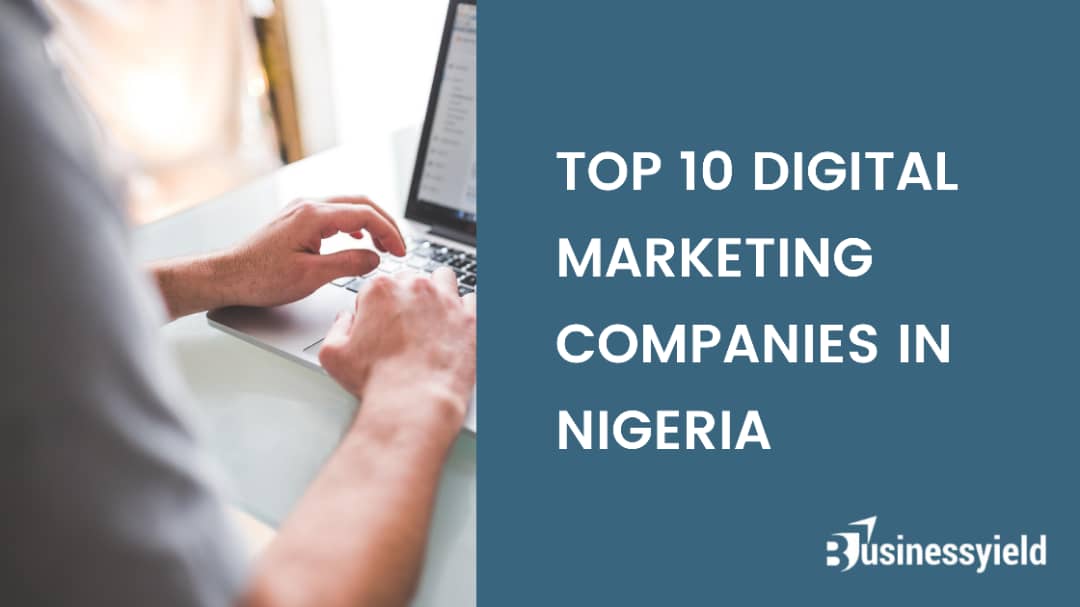Marketing can help prospective customers learn about your product or service offerings, guiding them through the customer journey and assisting you in making more sales. Not only does marketing raise brand awareness by informing more people about your company, but it also strives to make the sales process easy for everyone. Here, we’ll learn about the various types of marketing available, and how they suit each business.
Different Types of Marketing
Because marketing evolved alongside technology, there are many distinct types of marketing to choose from. Some marketing types will be more effective than others depending on the nature of your business, industry, and clients.
It’s also worth noting that there are two broader types of marketing: traditional and digital. Digital marketing is when you market to individuals online, via computers or mobile devices. This types of marketing makes it simple to analyze and monitor your efforts, removing the guesswork from marketing and allowing you to tweak each plan for the greatest outcomes.
Traditional marketing, on the other hand, employs print and traditional kinds of media, such as television advertisements and billboards. The various marketing types listed below can come within these two main marketing categories.
#1. Content marketing
Content marketing is a powerful inbound marketing technique that educates and engages customers by assisting them in finding information about your products, company, or industry on the internet. Examples include:
- Blogs
- Social media posts
- E-guides
- Video
The goal of content marketing is to present your customers with information that will help them make a purchasing choice.
#2. Social media marketing
Social media marketing is sometimes regarded as a minor component of content marketing. Many marketers, however, believe that social media is a stand-alone marketing approach that deserves more attention. Social media is a low-cost marketing tool that can help you boost audience engagement, educate consumers, and sell more things.
There are numerous social media marketing platforms to choose from, and some will be more helpful for your marketing goals than others. B2B companies, for example, often achieve greater results on LinkedIn and Facebook than on Instagram and YouTube. Meanwhile, more visually oriented firms, such as e-commerce, perform better on Instagram, TikTok, and Facebook. If you have a smart strategy, you can reach your audience everywhere.
#3. Influencer advertising
Some may regard influencer marketing as a part of social media marketing, while others regard it as a distinct method. Businesses can use influencer marketing to capitalize on the relationships that influencers and opinion leaders have already established with their target consumers.
Because influencers are thought leaders in their fields, they have earned a degree of trust that few firms will, thus their followers are more likely to listen to product suggestions. As a result, influencer marketing can raise your brand’s exposure, brand awareness, and sales.
Influencer marketing is popular in B2C, particularly for e-commerce companies. B2B companies, on the other hand, can benefit from these popular marketing strategies if they discover an industry thought leader with a large enough following.
#4. Search engine marketing
This type of marketing encompasses all forms of marketing that make use of search engines such as Google as a marketing tool. Search engine marketing is usually comprised of two digital marketing tactics.
Search engine optimization (SEO): Have you ever pondered why your competitors appear at the top of Google search engine results pages (SERPs)? The solution is SEO, a marketing strategy that optimizes website content to help you rank higher in search engines.
Pay-per-click (PPC) advertising: Another search engine marketing method that can assist your company’s website appear on SERPs is PPC advertising. However, instead of organic results at the top or bottom of the SERP, your website will show in the sponsored search results area. PPC needs you to pay per click, but SEO is concerned with organic traffic. Both are great methods for increasing visitors to your website.
In recent years, SEM has become mostly connected with PPC, while SEO has evolved into its own distinct strategy. So, while discussing possibilities with a marketing agency, make sure you understand the type of SEM they’re talking about.
Because many individuals use search engines as their first stop when looking for solutions, any sort of organization can profit from SEM. As a result, a B2B software company and a B2C e-commerce company can both utilize SEM to expand their reach and enhance website traffic.
#5. Email promotion
Because email marketing is so powerful, many businesses employ it. Email marketing necessitates marketers sending emails to customers and prospects in order to increase sales and guide them smoothly through the sales funnel. substantial conversion rates result in substantial returns.
Email marketing necessitates getting people to subscribe to your emails, which may take some effort if you haven’t already begun building your list. Even so, once you have subscribers, you can send them emails and drip campaigns with new product launches, abandoned cart notifications, and even newsletters to assist them progress through the funnel. Learn about the customer lifecycle for email marketing before you begin putting out your emails to see how automation can help you improve sales.
Email marketing and automation can help B2B and B2C businesses enhance their sales processes. While B2C marketing emails will be more focused on rapid transactions, B2B organizations can utilize automation to support the sales process and keep more prospects in the pipeline.
#6. Public relations
Public relations (PR) is a sort of marketing that can aid in the development of your company’s reputation in the media. To manage a firm’s image and reputation, public relations cultivates good relationships between your company and the general public through earned media. Finally, public relations seeks to position your firm or an individual from your organization as a thought leader in a specific area, enhancing brand awareness and trust among the general public.
While all organizations can benefit from maintaining their public image, larger companies that are frequently in the news require more extensive public relations strategy. Local PR, on the other hand, can benefit local businesses if they have something newsworthy to contribute.
#7. Print advertising
Print marketing is the use of print media to raise brand awareness for your business. Advertisements in magazines, brochures, and billboards are examples of print marketing. Even while there are some strategies for ensuring your efforts execute well, print marketing is not something that can be effectively measured. Print marketing, for example, might advertise your product or service inside a certain geographic area, whereas national magazines can increase brand awareness across various places.
Print marketing may work for any type of business. You must, however, choose your periodicals carefully. B2B enterprises, for example, may choose to advertise in trade journals, but B2C businesses can target consumer magazines with a broader, less specialized reach.
#8. Direct mailing
Direct mail marketing is similar to email marketing in that it sends information to your real mailbox rather than your digital mailbox. Print pieces can include much of the same information as emails, such as CTAs and incentives. Unfortunately, direct mail marketing for your business may not be as efficient as email marketing because many consumers may consider it junk mail and chuck it in the garbage without reading the information you provide them. As a result, your offer to clients must be obvious in order for them to take the desired action.
Direct mail is another marketing approach that every company can use. A local spa, for example, may send direct mail to city residents to advertise discounts, but a B2B company will send mailings directly to businesses rather than residential residences.
#9. Radio and television
Everyone has seen or heard advertisements. Television and radio advertising have altered over time, yet they continue to be effective company marketing techniques. Unfortunately, these adverts can be costly, making them unsuitable for small enterprises. If your company has the funds to spend, you’ll need to think outside the box to encourage consumers to take action.
Types Of Marketing Strategies for Growing a Business
To reach their target consumers, marketing teams employ a wide range of tactics. Many of their campaigns may employ traditional marketing, digital marketing, or a hybrid of the two. Understanding the various types of marketing strategies might assist you in developing effective strategies for your employer.
What Are Marketing Strategies?
Marketing tactics are the methods you employ to get out to your target audiences. They can employ a range of formats, including traditional forms such as radio, print, and television campaigns, as well as digital approaches such as pay-per-click commercials, search engine optimization, website content, and social network posts. When brands develop their marketing strategy, they frequently aggregate them into broader campaigns. This aids in the creation of content that adheres to a central subject or objective.
Different Types Of Marketing Strategies
#1. Blogging
Writing blogs that are relevant to the interests of your target audience is a wonderful method to get more visitors to your website. Blogging boosts both search engine optimization (SEO) and brand trust. Consider launching a blog that covers significant company subjects or the location of the company’s headquarters.
#2. Case studies
Case studies are digital documents that demonstrate your work for other brands or customers. They assist clients in visualizing what a firm has to offer. These documents provide a thorough examination of the company’s products, values, services, and mission.
#3. E-books
E-books are free documents that may be downloaded and used by marketing teams to convert leads. A free e-book rich with beneficial information can be obtained in exchange for a consumer’s contact information. E-books often contain long-form material and are focused on a single topic.
#4. SEO
Search engine optimization (SEO) is the process through which businesses enhance their websites so that they appear higher on search engine results pages (SERPs). You may reach more individuals and persuade them to visit your website by using organic search. Brands can use certain strategies and keywords to appeal to SEO.
#5. Pay-per-click advertising
Pay-per-click (PPC) advertising is a type of paid advertising. The corporation pays a charge every time someone clicks on your ad. Most marketers utilize pay-per-click (PPC) advertising to reach more people through search engines.
#6. Word-of-mouth marketing
Although corporations may not have much control over this type of promotion, word-of-mouth is an excellent technique to encourage more people to try a firm. Word-of-mouth marketing is a marketing method in which customers tell others about a company’s services or products. By delivering exceptional customer service, you can encourage people to say positive things about a brand.
#7. Viral videos
Creating viral material, like videos, can generate a lot of attention for a brand. To leverage this strategy, marketing teams examine upcoming trends. Marketers utilize social media channels to broadcast short videos in order to capture the attention of consumers.
#8. Influencer connections
Many brands collaborate with well-known public figures to market their products and services. Because many users believe the opinions of the influencers they admire, this type of marketing has been successful.
#9. Print advertisement
This is a type of traditional advertising. Advertisements and sponsored pieces are distributed by marketers in newspapers, magazines, and other printed products. They then distribute these materials, encouraging merchants to sell them or individuals to share them with others.
#10. TV Commercials
Commercial production is still a common strategy for many manufacturers. They can target their consumers based on the television shows that they sponsor. Some businesses purchase advertising segments at peak television times or during famous televised events.
#11. Radio advertising
You can target certain audiences depending on radio station listening demographics. In their radio commercials, brands frequently employ voice actors and intriguing sound effects. Companies may examine which radio stations best cater to their target consumers when designing radio commercials.
#12. Streaming services
As video and music streaming services gain popularity, many advertisers are turning to these platforms to reach more niche audiences. Because these services can collect significantly more consumer data than traditional television or radio, brands can generate more tailored advertisements. This can aid in reaching consumers who fit the company’s target demographic.
#13. Guerilla marketing
Guerilla marketing is when marketers promote their products in novel ways. Pop-up events, free samples, and other in-the-moment marketing are examples of this. Marketers can use this strategy to reach more customers by visiting colleges, schools, and retailers.
#14. Email promotion
Email marketing can help you nurture your leads. Many brands provide newsletters to their email list in order to deliver engaging material. They also deploy drip campaigns, which deliver emails dependent on the activities of the user.
#15. Events
Sponsored events are held by brands to increase interest in what they have to offer. Seminars, talks, parties, galas, and charity events are examples of such events. They might even provide some of their items as party favors.
What Is The Full Meaning of Marketing?
Marketing is the activity, collection of institutions, and procedures for producing, conveying, delivering, and exchanging value-added offerings for customers, clients, partners, and society as a whole.
What Is the Difference Between Marketing and Advertising?
Marketing, in its most basic form, is the process of discovering client needs and deciding the best way to meet those needs. Advertising, on the other hand, is the practice of marketing a corporation and its products or services through paid channels. Advertising, in other terms, is a component of marketing.
What Is The Purpose of Marketing?
The primary goal of marketing is to generate interest in a company’s products or services.
What Is Another Name For Marketing Strategy?
A marketing strategy is sometimes known as a marketing plan.
What Is the Marketing Process?
The marketing process is a five-step procedure used by marketers to develop customer value and long-term client relationships. Identifying the target audience, developing a marketing strategy, implementing the plan, and analyzing its efficacy are the steps.
In Conclusion,
While both traditional and digital marketing are useful, you may combine them to boost brand exposure and sales. Consider your brand and its clients when selecting which marketing methods are best for you. Your goal should be to figure out where your customers spend their time and how to reach them.
Related Articles
- LOCAL ADVERTISING: What It Is, How It Works, and Marketing Ideas That Works
- PRINT MANAGEMENT: Definition, Service, Software & Solution
- ADIDAS AFFILIATE PROGRAM: 2023 Review, Commission & Detailed Guide
- SMALL BUSINESS ADVERTISING IDEAS AND COSTS IN 2023






